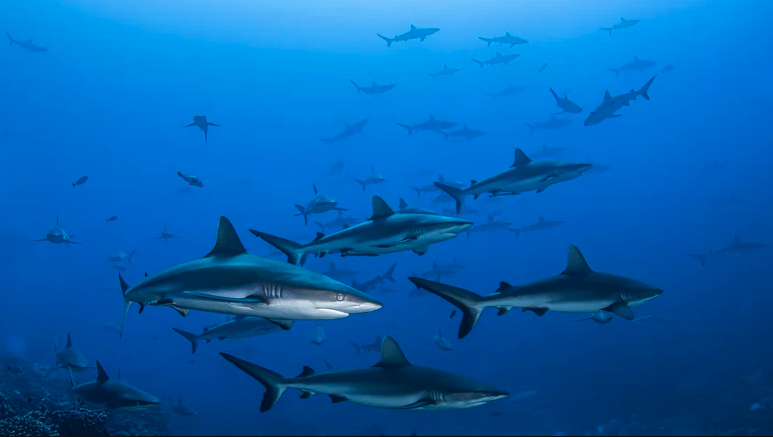It's No Surprise This Shark Is The Most Dangerous In The World
The title "It's No Surprise This Shark Is The Most Dangerous In The World" likely refers to the Great White Shark. This shark is known for its large size, powerful jaws, and predatory behavior, all of which contribute to its fearsome reputation. The Great White Shark has a streamlined body, equipped with a muscular tail and hydrodynamic shape, which makes it an efficient hunter in the open ocean. It primarily feeds on marine mammals and is considered an apex predator, capable of inflicting serious injuries on humans. While attacks on humans are rare, the potential for harm solidifies the Great White Shark's position as one of the most dangerous sharks in the world.

The ocean's depths hold a plethora of creatures, some beautiful, some bizarre, and some downright terrifying. Among these, sharks reign supreme as apex predators, commanding respect and instilling fear in equal measure. While many shark species are formidable hunters, one stands out as arguably the most dangerous to humans: the great white shark (Carcharodon carcharias). The phrase "It's No Surprise This Shark Is The Most Dangerous In The World" often refers to this iconic predator, and a closer examination reveals why this reputation is well-earned.
The great white shark's physical attributes contribute significantly to its fearsome status. These massive fish can grow to impressive lengths, reaching up to twenty feet or more, with some unconfirmed reports suggesting even larger individuals. Their torpedo-shaped bodies are perfectly adapted for powerful bursts of speed, allowing them to ambush prey with devastating efficiency. The great white's coloration provides excellent camouflage: a dark grey or bluish-grey dorsal side blends seamlessly with the dark depths when viewed from above, while a white ventral side makes them difficult to spot against the sunlit surface from below. This countershading makes them virtually invisible to unsuspecting prey.
Perhaps the most iconic feature of the great white is its massive jaws, lined with rows of serrated, triangular teeth. These teeth are not rooted in the jaw like human teeth, but rather embedded in the gums, constantly being replaced throughout the shark's life. This "conveyor belt" of teeth ensures that the shark always has a sharp and effective biting surface. The serrations on the teeth act like a saw, allowing the shark to shear through flesh and bone with ease. The bite force of a great white is estimated to be among the strongest in the animal kingdom, capable of inflicting devastating injuries.
Beyond their physical capabilities, the great white's hunting strategies further solidify their reputation as formidable predators. They are ambush hunters, often patrolling near the surface or along the seafloor, waiting for an opportunity to strike. Their primary prey includes seals, sea lions, dolphins, and other marine mammals, which they often attack from below with a powerful upward thrust. This "breaching" behavior, where the shark launches itself completely out of the water, is a spectacular display of power and athleticism.
While great white sharks are undeniably powerful predators, it's important to understand the context of their interactions with humans. Despite their fearsome reputation, unprovoked attacks on humans are relatively rare. Most recorded incidents are believed to be cases of mistaken identity, where the shark may mistake a surfer or swimmer for a seal. In these cases, the shark may take a single exploratory bite and then release the human, realizing it is not their intended prey. However, even a single bite from a great white can inflict serious, potentially fatal injuries due to the sheer size and power of the animal.
The great white shark's distribution also plays a role in its perceived danger. They are found in temperate and subtropical waters around the world, including coastal areas frequented by humans. This overlap in habitat increases the potential for encounters, although the actual probability of an attack remains low.
The combination of the great white's size, strength, powerful bite, and effective hunting strategies, coupled with their presence in coastal waters, contributes to their reputation as the most dangerous shark in the world. While the risk of a shark attack is statistically low, the potential consequences of an encounter with a great white are undeniably severe, cementing their place as apex predators and objects of both fascination and fear. Their image has been further amplified by popular culture, particularly through films like "Jaws," which have ingrained the image of the great white as a relentless man-eater in the public consciousness. While this portrayal is often exaggerated, it's undeniable that the great white shark commands respect as one of nature's most formidable predators.
